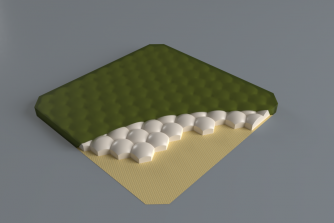The vests will newly combine the hardest developed ceramic with plastics or light metal alloys. In the course of time, they may replace the widely used steel plates, it adds.
"We have improved the qualities of the ceramic, which has been only exceptionally used in bullet-proof vests," Martin Kachlik said on behalf of the six-member team dealing with the development of ceramic materials.
"We are the first in the world to start testing its use in combination with polymers as well as the ceramic set of aluminium alloy matrices," Kachlik said. Bullet-proof vests for soldiers are more resistant than those for the police.
The vests used by the police are made of synthetic fibre kevlar. In it, a hardened plastic is inserted that is able to stop a common lead bullet, it adds.However, the guns used by the military include the iron core whose piercing effect is much stronger.
This is why the military prefers the usual armour. It is more resistant, but a vest made of it may weigh up to 30 kilograms. With the use of new materials that contain the ceramic, the vests may be up to two-thirds lighter. The research team from Brno is already testing the new materials for the vests. The results of ballistic tests have been very good, it adds.
Kachlik said he presumed the scientists would be able to offer brand-new materials for most modern and resistant bullet-proof vests in two years, Pravo writes.
"Ceramic very well absorbs energy after it is hit by a shot. On the other hand, a ceramic bullet-proof vest does not look good after it is hit," Kachlik said.
Unlike metal, ceramic is fragmented after it is hit.
"This is why we started combining the ceramic with plastics and metals so that the destruction of the vest is as small as possible due to the hits," he added.
In the course of time, the latest protective materials might replace the current ones in military helicopters or armoured personnel carriers. For them, armour may be problematic, too. On the one hand, it protects the machines, but being heavy, it complicates its driving and manoeuvring qualities in the field, Kachlik said.
Author: Vladimír Klepáč, Právo
Source: ČTK









